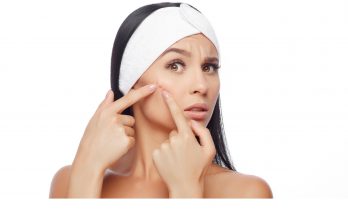Ever noticed how drug store variety lip balms actually seem to make your lips more chapped? I suffered for years feeling “addicted” to these balms, instead of healed, until I found a natural alternative containing shea butter and beeswax. This was the answer to my chapped lips, but I still had dry skin in general. Then I went to France and learned about the wonders of animal fats in traditional French cooking, and then later, in recipes for natural skincare.
The French Advantage
In their traditional cooking, the French use animal fats (butter, lard, duck fat, tallow) as well as olive oil. These are the most natural ingredients for the purpose of creating healthy, rich, satisfying meals. It’s really the secret to the French Paradox (eat richly, stay slim), and what I call the French Advantage. Traditional remedies for skin care contain edible or near-edible ingredients because industrial-grade skincare did not exist a few hundred years ago, so they used what was available naturally.
Edible Ingredients
When it comes to caring for our skin, we all want the best ingredients, which to me means preferably pesticide-free, paraben-free, phthalate-free, for starters. Since our skin is the largest organ in our body and effectively the largest physical barrier between “us” and the external environment, our skin needs to be treated with the respect it deserves. Some people even use the old adage, “if you can’t eat it, don’t put it on your skin.” Bye-bye lab-made, department store cosmetics and creams. Who would ever survive ingesting those? But what exactly are the edible ingredients you can use on your skin?
Hold on a Minute
We know olive oil is used in skincare, but duck fat? Lard? Are you kidding me? What is tallow anyway, and remind me why I would want to put that on my skin? It’s edible, but what if I don’t want to smell like a cow?!
You have probably heard of tallow candles, if not tallow soap. Tallow is fat from cows and other herbivores. Tallow used in any product is first rendered, which is a fancy term for melting. There is a subtle, earthy scent to rendered tallow. Combined with the delicious and uplifting aromas of shea butter, beeswax, and natural essential oils, rendered tallow can be applied to the skin for a moisturizing and soothing effect.
A Good Match
The fatty acid profile of tallow just so happens to best match our skin, more so than vegetable-based oils. Indeed, we are closer to the animal kingdom than the plant kingdom. In my own experience, tallow-based balms have a therapeutic effect on skin and lips. I have been making and using my own balms for several years now. Both family and friends have used them as well, and keep coming back for more. I now have customers who give testimonials of eczema and diaper rash healing, so it’s not just me. And who knew that lard soap could moisturize and lather up so nicely?
Go to the Source
The quality of the tallow used in products matters. Organic, grass-fed tallow (from cows who are raised eating on unsprayed pastureland) is best because it will have the least amount of pesticides, hormones, antibiotics, and GMOs lodged in the fat. Contaminants such as these are typically present in industrially-raised, grain-fed animals and in their feed. This is also why health-conscious foodies buy organic, grass-fed milk and butter whenever they can.Many are realizing they should do the same with clean skincare. Vote with your dollar and with what you put on your skin!



